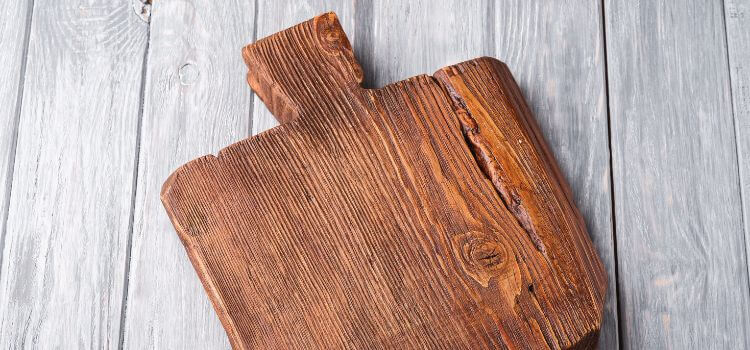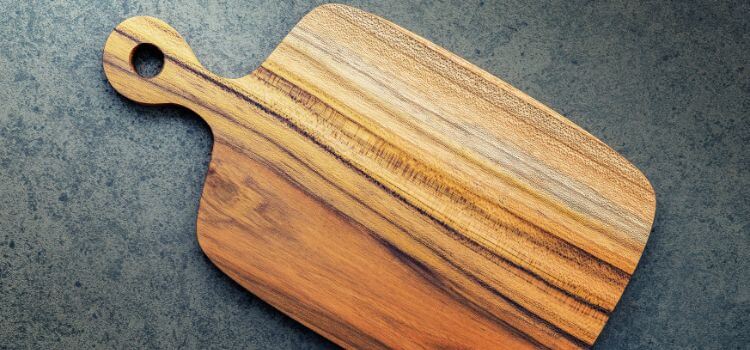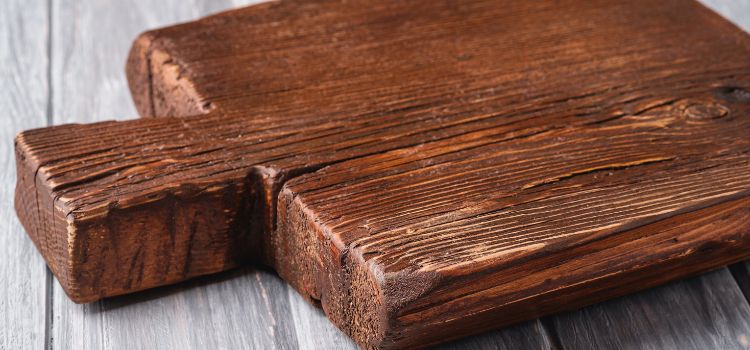As an Amazon Associate, I earn from qualifying purchases

When selecting the perfect material for your cutting board, teak often stands out as a popular choice among culinary enthusiasts. This article explores the characteristics that position teak as a premier choice for cutting board materials.
Due to its durability, inherent moisture resistance, and elegant aesthetics, we explore why teak might just be the ideal option for your culinary needs. Join us as we uncover the benefits of using teak in your kitchen arsenal.
Properties of Teak
Durability and longevity
One of the top qualities that make teak a standout choice for cutting boards is its exceptional durability. Teak is known for its resistance to warping, cracking, and splintering – making it the ideal material for heavy-duty use in the kitchen.
Teak wood is also known for its high oil content that helps repel water and prevent bacteria from seeping into the surface. This makes it a hygienic and long-lasting option for cutting boards, this material is highly durable, capable of enduring years of usage while resisting signs of wear and tear.
Natural resistance to moisture and bacteria
As mentioned earlier, teak’s high oil content contributes to its durability and makes it naturally resistant to moisture. This is a crucial factor in cutting boards as they are often exposed to water and other liquids during food preparation.
The inherent oils found in teak wood possess antibacterial qualities, effectively inhibiting the proliferation of harmful bacteria on the surface of the cutting board. This makes teak a safe and healthy choice for food preparation, ensuring that your meals are not contaminated.
Self-healing properties
Another impressive characteristic of teak wood is its ability to heal itself. Teak has a tight grain structure that allows it to close up any minor cuts or scratches on its surface over time. This self-healing property makes teak a low-maintenance option for cutting boards, as it can maintain its smooth and even surface with minimal upkeep.
Ability to withstand heavy daily use
Teak wood is celebrated for its exceptional durability and strength, rendering it an ideal selection for cutting boards designed to endure intensive daily usage. This makes teak the go-to option for professional chefs and avid home cooks requiring a sturdy and durable cutting board to tackle meal preparations.
Benefits of Teak Cutting Boards

- Low maintenance requirements: Thanks to its self-healing capabilities and inherent resistance to moisture and bacteria, teak cutting boards require minimal maintenance. Unlike other wood alternatives, they need neither regular oiling nor conditioning, saving you time and effort in caring for your cutting board.
- Elegant appearance: The warm golden-brown color and intricate grain patterns of teak wood lend a visually stunning appeal to cutting boards. Its elegance elevates kitchen aesthetics, this makes it a preferred option for those who value aesthetics in their kitchen tools.
- Versatility: Teak cutting boards provide an ideal surface for chopping and preparing a variety of foods, including fruits, vegetables, and meats but also serve as an excellent surface for serving cheeses, bread, and other appetizers. This versatility makes teak cutting boards a practical and functional addition to any kitchen.
- Gentle on knife blades: Teak wood, with its dense grain and inherent oils, provides a soft surface for knife blades, minimizing the likelihood of them becoming dull or damaged. This is particularly beneficial for those who invest in high-quality knives and want to maintain their sharpness and longevity.
Comparison with Other Materials
While various materials are used for cutting boards, teak stands out as a top choice due to its unique properties. Let’s take a look at how it compares with other common cutting board materials:
- Bamboo: While bamboo is also a popular option for cutting boards, it falls short in durability and strength compared to teak. It is prone to cracking and warping, and its hard surface can quickly dull knife blades.
- Plastic: Plastic cutting boards offer affordability and simplicity in maintenance, but they do not have the same natural resistance to bacteria as teak. They also tend to show wear and tear more quickly, requiring frequent replacements.
- Other wood options: Several other woods, like maple and walnut, utilized for cutting boards, also boast remarkable durability and moisture resistance. Nevertheless, they might necessitate additional upkeep, including oiling or conditioning.
Care and Maintenance Tips

Proper cleaning and oiling techniques
To ensure your teak cutting board remains in immaculate condition, proper cleaning and oiling are crucial. Steer clear of harsh chemicals and abrasive cleaners to prevent damaging the wood’s surface. Instead, to cleanse your cutting board, employ warm, sudsy water and a gentle cloth.
It is also recommended that you oil your teak cutting board periodically, depending on its frequency of use. Food-grade oil is a preferred choice for conditioning teak wood, as it helps to seal the surface and maintain its natural oils.
Avoid extreme temperatures and moisture.
Teak cutting boards are sensitive to extreme temperatures and moisture like any other wood product. It is important to avoid exposing your cutting board to direct sunlight or placing hot pots or pans on its surface, as this can cause warping or cracking.
Ensuring your cutting board is completely dry after washing is vital to prevent moisture absorption into the wood. This practice preserves its inherent antibacterial properties and extends its durability.
Resurfacing and maintenance
There is no need to worry if you notice small cuts or scratches on your teak cutting board. As mentioned, teak has a self-healing property and will naturally close up these imperfections over time. However, if the damage is more significant or affects the functionality of the cutting board, you may need to consider resurfacing it.
Resurfacing involves sanding down the cutting board’s surface to remove any deep cuts or scratches and then applying a coat of food-grade mineral oil to reseal it. This process can help restore your teak cutting board to its original smooth and even surface.
Conclusion
Teak wood cutting boards offer a variety of benefits, featuring inherent resistance to moisture and bacteria, self-healing properties, and durability. They also have an elegant appearance and are gentle on knife blades. While other materials such as bamboo, plastic, and other wood options may be suitable for cutting boards, teak stands out due to its unique properties.
To ensure your teak cutting board remains in prime condition, regular cleaning and oiling are crucial. Additionally, it is important to protect it from extreme temperatures and moisture. If needed, resurfacing should also be considered. With diligent care, a teak cutting board can endure for numerous years, consistently offering a versatile and efficient workspace in your kitchen. Happy cooking!
As an Amazon Associate, I earn from qualifying purchases